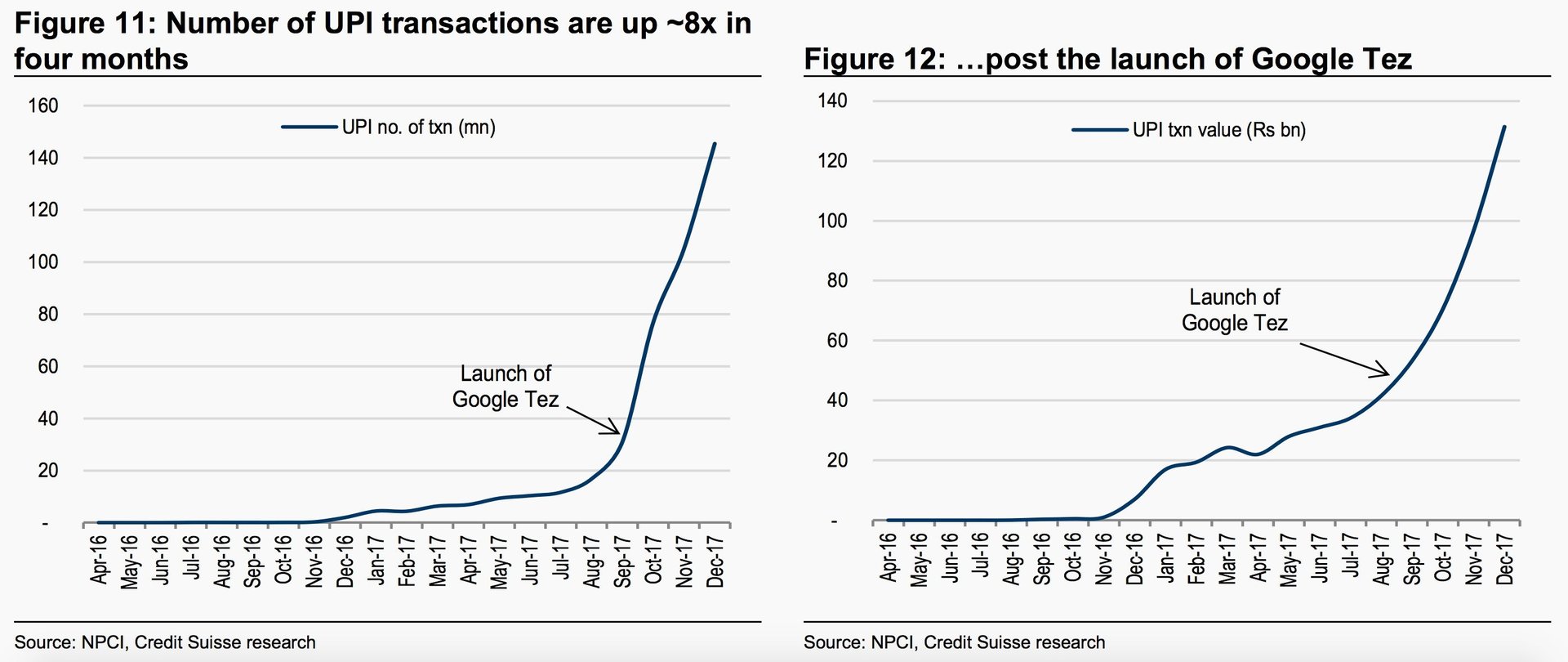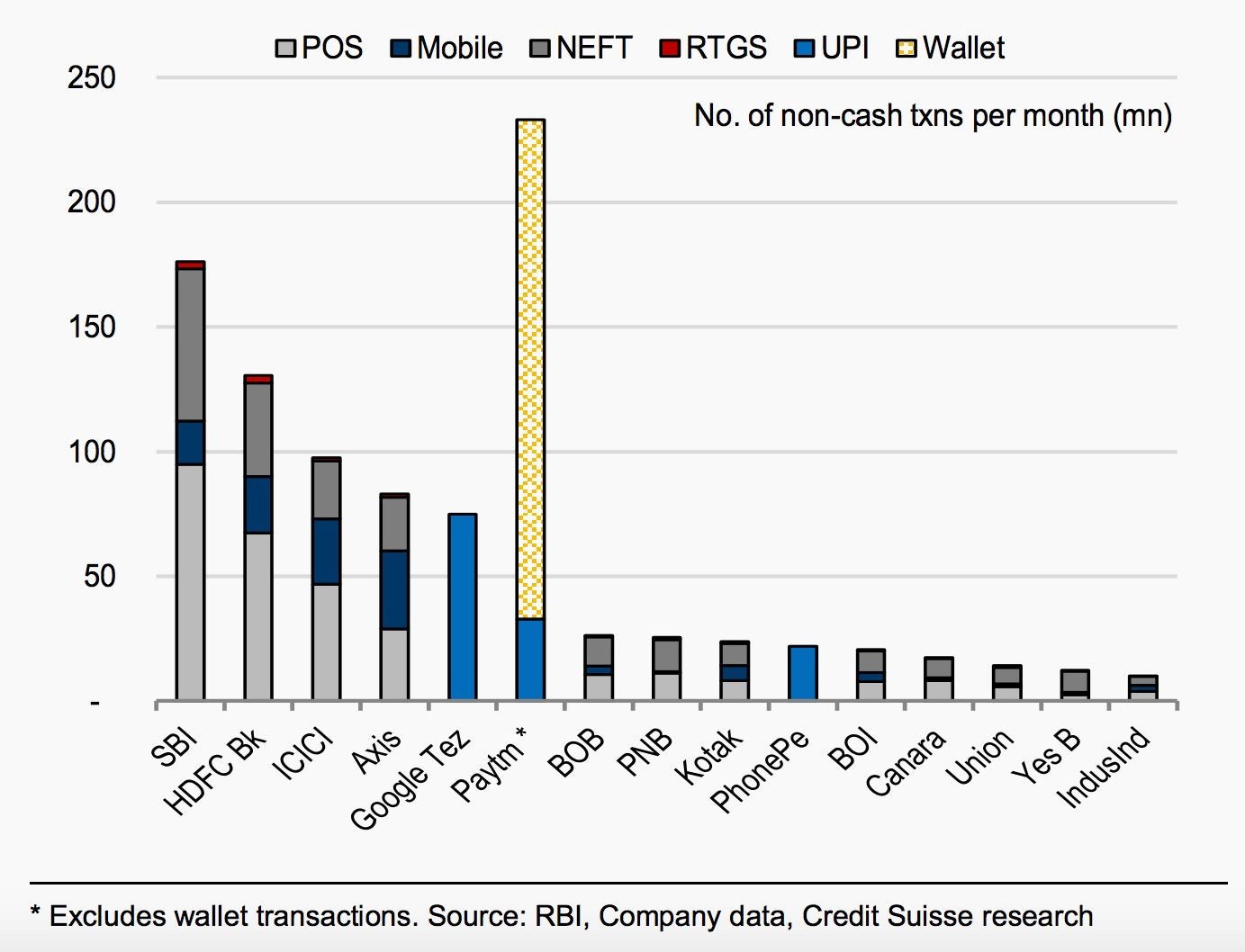Google is beating the Indian government at its own game: UPI
Google is cashing in on India’s flourishing e-payments sector, and how.


Google is cashing in on India’s flourishing e-payments sector, and how.
Tez, the e-payment gateway launched by the Silicon Valley-based company in September 2017, accounted for 52% of Unified Payments Interface (UPI) transactions in India in December 2017, a Credit Suisse report released this month revealed. The Google app is way ahead of the Bharat Interface for Money (BHIM) app, which was launched by the Indian government in January.
The UPI allows users to make payments and transfer money directly from their bank accounts, omitting the intermediary steps of loading and off-loading money from e-wallets. BHIM, launched to showcase UPI’s use, was responsible for the initial boost to the payment interface’s popularity. “UPI transaction volumes rose to six million by March 2017 with the BHIM app driving a large share of volumes,” the Credit Suisse report said.
But it was Google’s entry that really helped the UPI pick up pace.
In August 2017, before the search giant entered the fray, UPI volumes were around 17 million. They grew almost eight-fold to 145 million by December.

“The primary use case on Google Tez currently appears to be peer-to-peer transfers, partly driven by the cash-backs being offered,” Credit Suisse wrote.
Meanwhile, the BHIM app is losing its grip. While transaction volumes on BHIM have continued to rise, players like Google and Flipkart’s PhonePe punctured its dominance. Between August 2017 and the end of the year, BHIM’s share in terms of volumes fell from around 40% to just 6%. In transaction value, it almost halved from 45% to 26%.
Within four months of its launch, Tez has already bagged the spot next to the country’s third-largest private sector bank Axis on the leaderboard of non-cash transactions.
